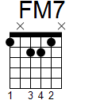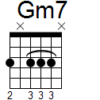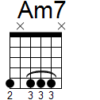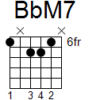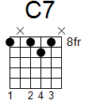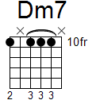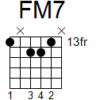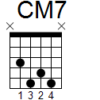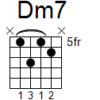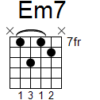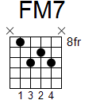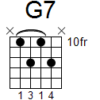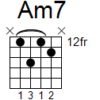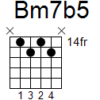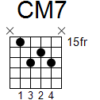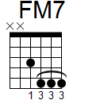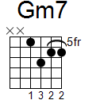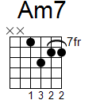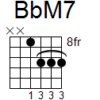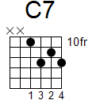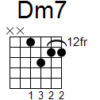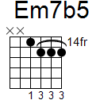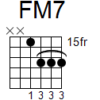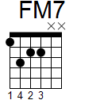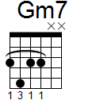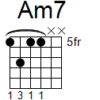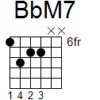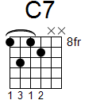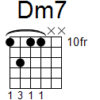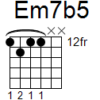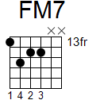A great way to learn chords and chord progressions is to learn them in context, whether it be a song or the chord chart for a backing track (yes, don’t just wail over them, learn the chord progression). Chords are more easily understood and absorbed when you hear how they function in a progression as oppose to learning them in isolation from a chord book. In this quick lesson, we’ll look at an exercise to learn the harmonized major scale in a variety of keys.
What is the Harmonized Major Scale?
To harmonize a major scale (or any scale for that matter), we build chords using every other note. If we take the C Major scale (C, D, E, F, G, A, B) and go C, E, G we get a C Major chord; if we keep adding every other note we get:
C, E, G, B – C Major 7
C, E, G, B, D – C Major 9
C, E, G, B, D, F – C Major 11
For the purposes of this lesson, we’ll be learning the 7th chords of the harmonized major scale. So, in C Major, we get the following chords:
C, E, G, B – C Major 7
D, F, A, C – D Minor 7
E, G, B, D – E Minor 7
F, A, C, E – F Major 7
G, B, D, F – G7
A, C, E, G – A Minor 7
B, D, F, A – B Minor 7b5
You may have seen Roman numerals associated with these scales:
| I | ii | iii | IV | V | vi | vii |
| C | Dm | Em | F | G | Am | B° |
These are used to refer to the degree of the scale since they are the same in all keys. If someone wants to play a “two-five-one” in C, everyone knows that the chords will be Dm, G and C; it facilitates communication among musicians.
Back to the Chords
As a guitarist, you can instantly make yourself 10 times more employable by learning a variety of chords in different positions, especially the harmonized major scale since a large percentage of the music you’ll play revolves around this concept.
First, we’re going to learn four sets of harmonized major scale chords to give you more than enough options for the root inversion of these chords – root inversion meaning that the lowest note in the chord is the root note.
How to Practice
I’d recommend doing this as a warm-up exercise for a couple of reasons; a) it’s a good gentle warm-up exercise; b) chords stretch your fingers in different ways than scales do, and c) it’s one of those things that just needs to be memorized and doing it as a warm-up exercise takes the tedium out of it.
Here are the first set of chords and we’re in F Major now – remember that you’ll find the same sequence of chord types in all keys.
As you practice these sequences of chords try to make your transitions as smooth as possible with the minimum amount of movement.
For Set 2, we’ll be using the key of C and the 5-4-3-2 string set:
Here are the chords for Set 3, and we’re back in the key of F Major:
Our final sequence of chords (Set 4) uses the four lowest four strings and have a great sound – at least to my ear!
In this lesson, we’ve covered around 30 chords in a sequence that can be applied to any key, totaling well over 300 chords. As you can probably tell, this is a far more efficient way of learning chords which you’ll start to see in a lot of the tunes you play.
In Part 2, we’ll add even more chords to our repertoire by learning the inversions of the above chords in the same manner.

